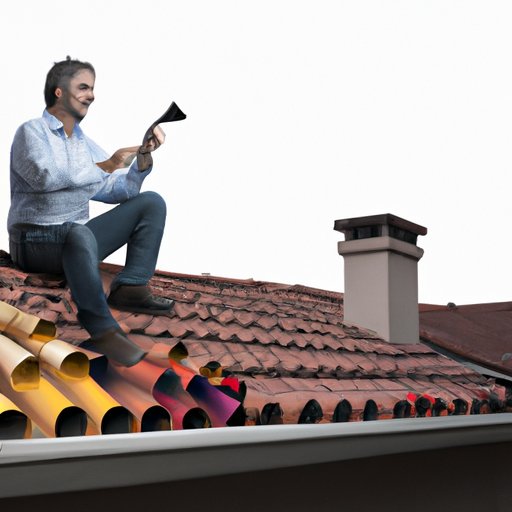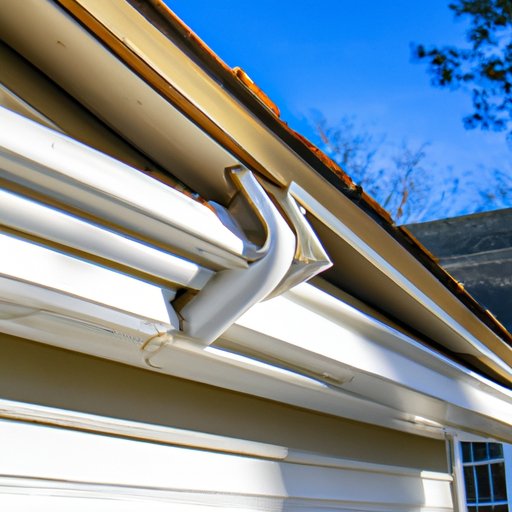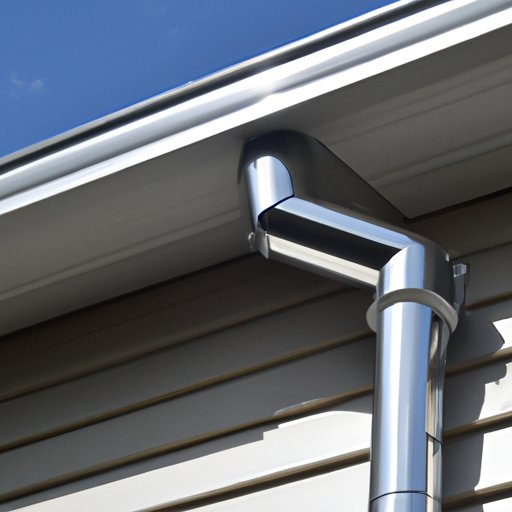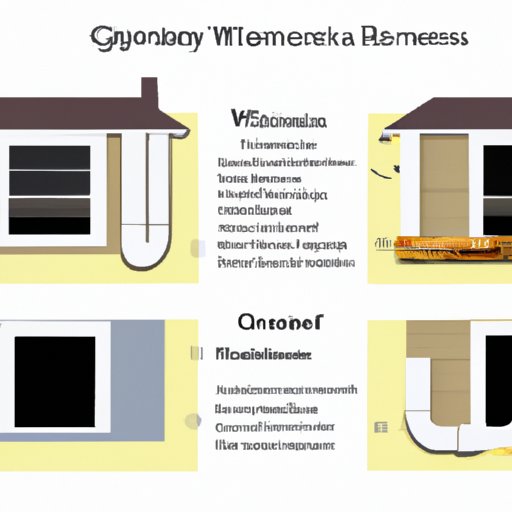Introduction
Gutters protect your home from a variety of weather-related damages, but is investing in them really worth it? In this article, we’ll explore the pros and cons of installing gutters, as well as the cost-benefit analysis and return on investment associated with different types of gutter systems.

Analyzing the Benefits of Gutter Investments
Gutters are an essential component of any home, as they help protect against water-related damages that could be costly to repair. Here are some of the main benefits of investing in gutters:
Protection from Weather Damage
Rainwater can wreak havoc on your home, causing everything from roofing damage to basement flooding. Installing gutters helps ensure that rainwater is diverted away from your house, thereby reducing the risk of water-related damages. Additionally, gutters can help protect your home from ice dams during the winter months, which can cause roof leaks, water damage, and even foundation problems.
Improved Home Aesthetics
In addition to the practical benefits, gutters can also enhance the look of your home. By properly diverting water away from your home, you can avoid unsightly staining and discoloration that can occur when water accumulates around the foundation. Additionally, many types of gutters come in a variety of colors and styles, so you can find one that complements your home’s existing aesthetic.
Reduced Risk of Foundation Damage
Without proper drainage, rainwater can accumulate around the foundation of your home, leading to serious structural problems. Not only can this cause cracking and settling, but it can also lead to mold growth and other moisture-related issues. Installing gutters helps direct water away from the foundation, reducing the risk of these problems.
Cost-Benefit Analysis of Investing in Gutters
When considering whether or not to install gutters, it’s important to consider the potential costs and benefits associated with the project. Here’s a closer look at the cost-benefit analysis of investing in gutters:
Initial Installation Costs
The initial cost of installing gutters will depend on several factors, such as the size of your home and the type of gutter system you choose. Generally speaking, seamless aluminum gutters are the most expensive option, while vinyl gutters are the least expensive. Additionally, you’ll need to factor in the cost of labor if you plan to hire a professional to install the gutters.
Potential Maintenance Costs
The frequency of maintenance required for gutters will vary depending on the type of material used. For example, aluminum gutters typically require more frequent cleaning and maintenance than vinyl gutters. Additionally, you may need to replace certain components over time, such as hangers and downspouts.
Factors that May Affect the Cost
There are several factors that can affect the cost of installing gutters, such as the size of your home, the type of gutter system you choose, the complexity of the installation, and the cost of labor. Additionally, the location of your home may also affect the cost, as some areas have higher labor rates than others.

Exploring the Pros and Cons of Installing Gutters
Now that we’ve discussed the cost-benefit analysis of gutters, let’s take a look at the pros and cons of investing in them:
Pros
- Protects your home from weather-related damages
- Enhances the look of your home
- Reduces the risk of foundation damage
- Increases the value of your home
Cons
- Initial installation costs can be high
- Maintenance costs can add up over time
- Location can affect the overall cost of the project
Comparing the Lifespan of Different Gutter Systems
The lifespan of your gutters will depend on the type of material you choose. Here’s a closer look at the expected lifespans of three popular gutter systems:
Seamless Gutters
Seamless gutters are made from metal and are designed to be installed in one continuous piece, eliminating the need for seams. These gutters are durable and long-lasting, with an average lifespan of 20 years or more. Additionally, they’re relatively low-maintenance, requiring only occasional cleaning and maintenance.
Vinyl Gutters
Vinyl gutters are made from plastic and are designed to be lightweight and easy to install. They’re less expensive than other types of gutters, but they’re also less durable, with an average lifespan of 10-15 years. Vinyl gutters are also low-maintenance, requiring only occasional cleaning and maintenance.
Aluminum Gutters
Aluminum gutters are the most common type of gutter system and are designed to be durable and long-lasting. They’re more expensive than vinyl gutters, but they’re also more durable, with an average lifespan of 20 years or more. Aluminum gutters require more frequent cleaning and maintenance than other types of gutters.

Understanding the Return on Investment of Gutter Systems
When investing in gutters, it’s important to consider the potential return on investment (ROI). Here’s a closer look at how to calculate the ROI of different types of gutter systems:
Calculating the ROI
To calculate the ROI of a gutter system, you’ll need to subtract the total cost of the project (including installation and maintenance) from the estimated increase in home value due to the installation of the gutters. The resulting figure is the ROI of the project.
Factors That Affect the ROI
The ROI of a gutter system will vary depending on several factors, such as the type of gutter system you choose, the size of your home, and the estimated increase in home value. Additionally, the location of your home can also affect the ROI, as some areas may have higher home values than others.
Conclusion
Investing in gutters can provide a number of benefits, including protection from weather-related damage, improved home aesthetics, and reduced risk of foundation damage. However, there are also potential costs associated with the project, including initial installation costs and potential maintenance costs. Additionally, the ROI of a gutter system will depend on the type of material used, the size of your home, and the estimated increase in home value. Ultimately, investing in gutters can be a smart decision if you’re looking to protect your home from water-related damage and increase its value.
Summary of Findings
Gutters provide a number of benefits, including protection from weather-related damage, improved home aesthetics, and reduced risk of foundation damage. The cost of installing gutters will depend on several factors, such as the size of your home and the type of gutter system you choose. Additionally, the ROI of a gutter system will depend on the type of material used, the size of your home, and the estimated increase in home value.
Final Recommendations
If you’re looking to protect your home from water-related damage and increase its value, investing in gutters can be a wise decision. Be sure to do your research and compare the costs and benefits of different gutter systems before making a final decision.
(Note: Is this article not meeting your expectations? Do you have knowledge or insights to share? Unlock new opportunities and expand your reach by joining our authors team. Click Registration to join us and share your expertise with our readers.)
